advertisement
1 April 2024
Arizona, known for its unique identity and diverse landscapes, is home to various state symbols representing its rich heritage. From the iconic saguaro cactus to the resilient cactus wren, each emblem tells a story of Arizona’s natural beauty and cultural significance. Let’s look closely at some of Arizona’s state symbols and key facts about the state.
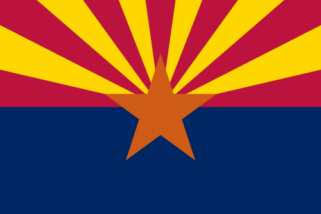 AZ State Flag
AZ State FlagThe Arizona State Flag features alternating red and yellow rays, symbolizing the 13 original colonies and the setting sun of the western landscape. The blue bottom half represents the U.S. flag, while the copper star signifies Arizona’s leading role in copper production.
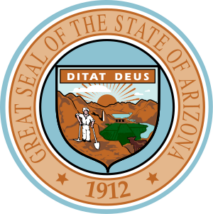 AZ State Seal
AZ State SealThe state seal portrays a scene of agricultural abundance, with irrigated fields, orchards, and grazing cattle against a backdrop of mountains. A miner with a pick and shovel represents Arizona’s mining heritage and the motto “Ditat Deus,” which means “God enriches.”
Arizona has two state songs: the “Arizona March Song” and “Arizona” by Rex Allen Jr., both of which celebrate the state’s scenic beauty and spirit.
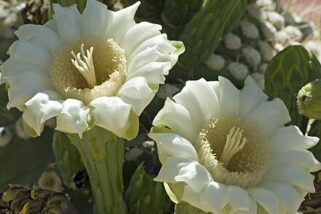 AZ State Flower
AZ State FlowerSymbols like the Saguaro cactus flower and turquoise gemstone embody Arizona’s natural wonders, while the Palo Verde tree and cactus wren highlight the state’s diverse flora and fauna.
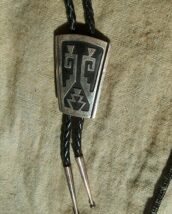 AZ State Neckwear
AZ State NeckwearThe bola tie, designated as the state neckwear, reflects Southwestern style and craftsmanship and showcases Arizona’s artistic tradition.
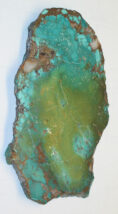 AZ State Gemstone
AZ State GemstoneTurquoise was named Arizona’s state gemstone in 1974. This blue-green stone with a waxy surface has been a staple in Southwest Indian Jewelry for centuries. Composed of hydrous oxide of aluminum and copper, it’s abundantly found throughout the region.
Phoenix is the state capital and largest city, with a population of over 6.6 million. Arizona’s nickname, the Grand Canyon State, pays tribute to one of its most famous natural landmarks. Spanning over 113,000 square miles, Arizona offers vast landscapes and diverse communities.
Arizona’s rich heritage and natural beauty come to life through its state symbols and quick facts. From its iconic landscapes to its vibrant culture, Arizona continues to captivate residents and visitors with its enduring spirit and dynamic identity.
advertisement
Arizona might be known for its sun-soaked deserts and dramatic red rock formations, but the Grand Canyon State also offers incredible water adventures for locals and visitors alike. From lazy tubing down rivers to kayaking through canyons, there’s no shortage of aquatic fun to cool off under the Arizona sun. advertisement 1. Tubing the Salt River No Arizona summer is complete without a float down the Salt River in Mesa. This laid-back, family-friendly activity lets you relax as you drift through stunning desert scenery while spotting wild horses along the banks. Bring sunscreen, water shoes, and a waterproof speaker for
The Salt River wild horses are one of Arizona’s most beloved symbols of freedom, beauty, and resilience. These majestic animals roam the lower Salt River in the Tonto National Forest, an area synonymous with the wild, untamed spirit of the American West. But once again, their very existence is under threat. advertisement A Fight for Survival In 2015, when the Salt River wild horses faced possible removal, Arizonans came together in a historic show of unity. The outpouring of public support led to the passage of the Salt River Horse Act in 2016, protecting the herd from unnecessary removal and
Arizona comes alive in November with festivals, art shows, and outdoor events celebrating the best of culture, cuisine, and creativity. From Día de los Muertos celebrations in downtown Phoenix to the glow of floating lanterns in Tempe, there’s something for everyone to enjoy this fall. advertisement Mikiztli Día de los Muertos Phoenix Festival Celebrate the vibrant traditions of Día de los Muertos at Mikiztli, a family-friendly event honoring Indigenous roots and community remembrance. Enjoy mariachi performances, ballet folklórico, face painting, local art, and food trucks. The evening concludes with a lively sunset procession led by Las Flacas, towering 8-foot skeleton
Long before the Valley of the Sun became the desert city we know today, this region was a hub of dynamic earth processes that left behind the strange formations that make up the Papago Mountain. advertisement Ancient Origins Some of Arizona’s oldest geological features, such as the mountains around Sedona and Tucson, date back approximately 2.7 billion years. In comparison, the Phoenix area is geologically young, at 15 to 30 million years old. This makes it one of the newest regions in the state. Notably, much of Arizona’s ancient rock has been uplifted and carried far from its origin. Some
advertisement
| Cookie | Duration | Description |
|---|---|---|
| cookielawinfo-checkbox-analytics | 11 months | This cookie is set by GDPR Cookie Consent plugin. The cookie is used to store the user consent for the cookies in the category "Analytics". |
| cookielawinfo-checkbox-functional | 11 months | The cookie is set by GDPR cookie consent to record the user consent for the cookies in the category "Functional". |
| cookielawinfo-checkbox-necessary | 11 months | This cookie is set by GDPR Cookie Consent plugin. The cookies is used to store the user consent for the cookies in the category "Necessary". |
| cookielawinfo-checkbox-others | 11 months | This cookie is set by GDPR Cookie Consent plugin. The cookie is used to store the user consent for the cookies in the category "Other. |
| cookielawinfo-checkbox-performance | 11 months | This cookie is set by GDPR Cookie Consent plugin. The cookie is used to store the user consent for the cookies in the category "Performance". |
| viewed_cookie_policy | 11 months | The cookie is set by the GDPR Cookie Consent plugin and is used to store whether or not user has consented to the use of cookies. It does not store any personal data. |
